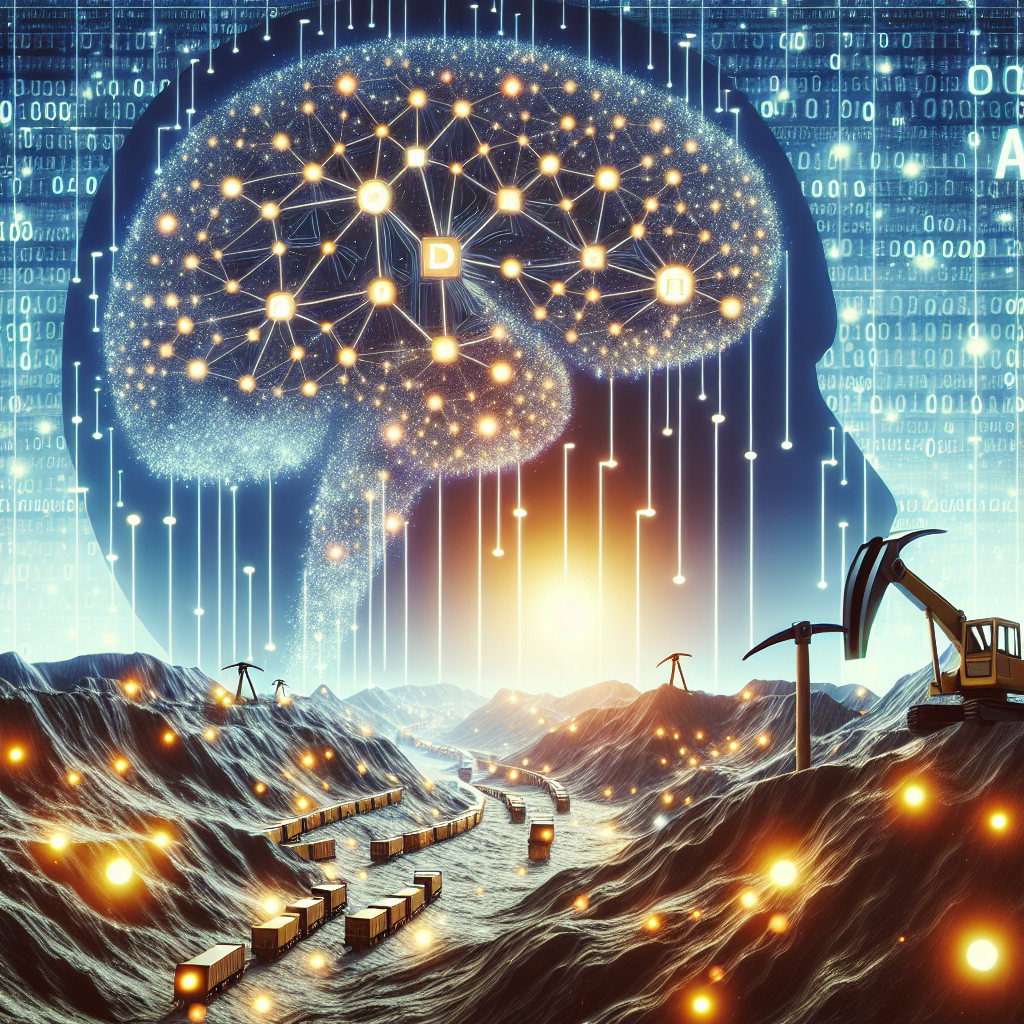In today’s digital age, data is being generated at an unprecedented rate. With the rise of the internet, social media, and various other digital platforms, the amount of data being produced is growing exponentially. This massive amount of data, often referred to as big data, holds valuable insights that can help businesses make informed decisions and gain a competitive edge. However, the sheer volume of data can be overwhelming, making it difficult to extract meaningful information from it.
This is where artificial intelligence (AI) algorithms come into play. AI algorithms are designed to analyze large datasets quickly and efficiently, helping businesses uncover patterns, trends, and insights that would be impossible to find using traditional data analysis methods. In this article, we will explore the role of AI algorithms in big data mining, the various types of algorithms used, and how businesses can leverage them to drive growth and innovation.
Types of AI Algorithms for Big Data Mining
There are several types of AI algorithms that are commonly used in big data mining. Each type has its own strengths and weaknesses, and the choice of algorithm will depend on the specific goals of the data mining project. Some of the most popular AI algorithms used in big data mining include:
1. Machine Learning Algorithms: Machine learning algorithms are a subset of AI algorithms that enable computers to learn from data without being explicitly programmed. These algorithms can identify patterns and trends in large datasets, making them ideal for big data mining projects. Some common machine learning algorithms used in big data mining include decision trees, random forests, support vector machines, and neural networks.
2. Clustering Algorithms: Clustering algorithms are used to group similar data points together based on certain criteria. These algorithms are used in big data mining to identify patterns and relationships within the data. Some popular clustering algorithms include k-means clustering, hierarchical clustering, and DBSCAN.
3. Classification Algorithms: Classification algorithms are used to categorize data into different classes or groups based on certain features. These algorithms are commonly used in big data mining to make predictions and classify new data points. Popular classification algorithms include logistic regression, naive Bayes, and k-nearest neighbors.
4. Association Rule Mining Algorithms: Association rule mining algorithms are used to identify relationships between different variables in a dataset. These algorithms are commonly used in market basket analysis to uncover patterns in consumer behavior. Popular association rule mining algorithms include Apriori and FP-growth.
5. Regression Algorithms: Regression algorithms are used to predict continuous values based on input variables. These algorithms are commonly used in big data mining to forecast trends and make predictions. Popular regression algorithms include linear regression, decision tree regression, and support vector regression.
How Businesses Can Leverage AI Algorithms for Big Data Mining
Businesses can leverage AI algorithms for big data mining in a variety of ways to gain insights, drive growth, and make informed decisions. Some of the key benefits of using AI algorithms for big data mining include:
1. Improved Decision-Making: By analyzing large datasets quickly and efficiently, AI algorithms can help businesses make data-driven decisions that are based on real-time insights. This can lead to better outcomes and improved business performance.
2. Enhanced Customer Insights: AI algorithms can help businesses uncover valuable insights about their customers, including their preferences, behavior, and purchasing patterns. By understanding customer needs and preferences, businesses can tailor their products and services to better meet customer demands.
3. Increased Efficiency: AI algorithms can automate the data mining process, saving businesses time and resources. By leveraging AI algorithms, businesses can analyze large datasets in a fraction of the time it would take using traditional methods.
4. Competitive Advantage: By leveraging AI algorithms for big data mining, businesses can gain a competitive edge by uncovering hidden patterns and trends in their data. This can help businesses identify new opportunities, optimize processes, and stay ahead of the competition.
Frequently Asked Questions (FAQs)
Q: What is big data mining?
A: Big data mining is the process of analyzing large datasets to uncover patterns, trends, and insights that can help businesses make informed decisions and drive growth.
Q: How do AI algorithms help with big data mining?
A: AI algorithms are designed to analyze large datasets quickly and efficiently, enabling businesses to uncover valuable insights that would be impossible to find using traditional data analysis methods.
Q: What are some popular AI algorithms used in big data mining?
A: Some popular AI algorithms used in big data mining include machine learning algorithms, clustering algorithms, classification algorithms, association rule mining algorithms, and regression algorithms.
Q: How can businesses leverage AI algorithms for big data mining?
A: Businesses can leverage AI algorithms for big data mining to improve decision-making, gain customer insights, increase efficiency, and gain a competitive advantage.
Q: What are the benefits of using AI algorithms for big data mining?
A: Some of the key benefits of using AI algorithms for big data mining include improved decision-making, enhanced customer insights, increased efficiency, and a competitive advantage.
In conclusion, AI algorithms play a crucial role in big data mining, enabling businesses to analyze large datasets quickly and efficiently to uncover valuable insights. By leveraging AI algorithms, businesses can make informed decisions, gain customer insights, increase efficiency, and gain a competitive edge. As the volume of data continues to grow, AI algorithms will become increasingly important in helping businesses extract meaningful information from their data and drive growth and innovation.

